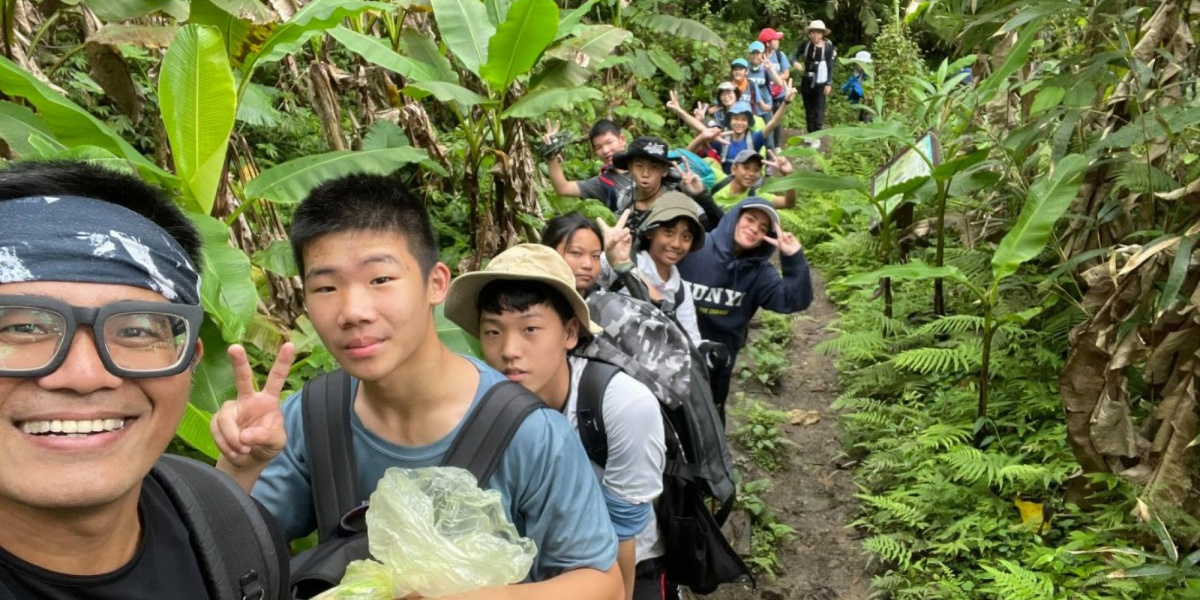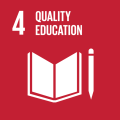Find myself and make me whole – exploring life in the wilderness
The Junyi School of Innovation is blessed to have a team of dedicated professional outdoor exploration teachers. The Outdoor Education Program cultivates students' courage, perseverance, serenity, judgment, adaptability, and teamwork. The program has three components: "Mountain," "Ocean," and "Biking." One of the program's teachers, Katu, also happens to teach history at Junyi. He comes from the Bunun ethnic group, known as the Alpine Nation; he knows the mountains well. Katu and his tribe are devoted to Taiwan's mountain forest culture and their tribe's heritage.

(Narrated by Katu)
Wilderness humbles a person. One cannot survive on one's own in the wilderness. You must set aside your ego and support each other. After each life exploration class, we find the class grows closer.
Life exploration class takes the students out of their comfort zones to uncover their potential. Such an experience helps a teenager's self-development. Many of Taiwan's youth are amazed by the magnificent mountains and forests of Taiwan. Junyi's curriculum is a balance of classroom learning and self-exploration in the wilderness.

How High is the Sky? Let Nature Tell You
It's about physically getting to know your environment. The Mountain group takes the 7th graders to Dulan Mountain. One can see the Dulan Mountain from Junyi. Although a small mountain, it gives the 7th graders new meaning to look at it every day after hiking it. The 8th graders will take on the mid-altitude trails, such as 延平林道 Yanping Forest Road, and the 9th graders will take on challenges above 3000meters, such as Siangyang Mountain. We challenge them gradually to build confidence.
We teach them the importance of fitness and challenge them in a safe environment. As such, they are motivated to train and support each other with minimum supervision from me. They learn how one's ill-preparedness can pose a risk to the team. They learn the meaning of teamwork.
Teamwork also means "learning to accept help from others." The high schoolers learn this lesson profoundly when they are challenged on the higher mountains. An 11th grader said: "I prefer to handle things on my own; I hate to expose my weakness, but this is a wrong attitude in a team." Another shared a similar sentiment: "My body could not take anymore, but my mind was still trying to sustain my self-esteem- I knew that was foolish, but what's more important than saving my face?" Teenagers learn that by appropriately asking for help, they can avoid becoming a burden to the team.
The high school emphasizes outdoor independence skills. I don't need to do much as their teacher. They elect their captain, manage resource gathering, and delegate responsibilities; they learn to work well together. They become knowledgeable in nature. They learn how deer droppings can serve as guides. Instead of finding the cement walls of the cities as their comfort zone, they fall in love with nature. I am pleased to see them cultivate the courage to pioneer and conquer their fears. These attributes will benefit them for a lifetime.

Who am I? Where do I come from?
As an Aboriginal, I was confused about my identity as a kid. My parents could not answer the question: "Who am I? Where do I come from?". I later learned that one needs to find the answer by looking at history differently.
I am from Taoyuan Village, Yanping Township, Taitung. I went to high school in 1990. When my tribal pastor took us to the streets to demonstrate, I came to realize the real history of my tribe is different from what I learned from history books. The Indigenous people do not have a written language. History is mostly an interpretation by mainstream society. After lifting martial law, the Indigenous people rode the tides of social movements and started their movements. This inspired my ethnic identity. After the government transformed the natives, we had trouble adapting. These issues required systematic research. Hence, I pursued social science in college. Knowledge is power, and if we, the natives, have our scholars to discourse in our own point of view, we may be able to influence some structural changes. I attended the Department of Indigenous Affairs and Development at National Dong Hwa University for graduate school. I began to visit various tribes with my professors to discuss topics on aboriginal society and autonomy further.
Regarding aboriginal history, I provide additional background to supplement the history books. For example, during the Japanese occupation, the Indigenous people and the Hans were governed differently. The Indigenous people did not have the same legal status as the rest. I guide the students in learning by putting themselves in historical situations. I asked them what they would do if their father and clan were going to rebel. Perceiving history from various perspectives can inspire imagination and insight.

Return to the Laipunuk Movement
So where did I come from?
It all began about 19 years ago when the "Return to Laipunuk" movement was launched to search for our roots. Laipunuk, in the Bunun language, is the name of an area located between 中央山脈卑南主山 Mount Beinan of Central Mountains and Shuang-Guei Lake. It belongs to the Luye River basin. In 2002, a group from the Bunun tribe returned to their ancestral home, Laipunuk, where their ancestors were forced to leave by the Japanese. After that, they took a group of Bunun back here every winter.

These journeys were organized in groups. For example, older natives and youngsters would hike 5 km each day. I lead the group to scout different paths and conduct interviews. We live in the mountains and build huts. We are not returning to historical ruins but to a home on the mountain. Each trip took around a month. In the deep mountain, we leverage all the natural resources from the wilderness. It was education through ethnic immersion. That is why this movement has continued for 19 years. It is not only about going back to our ancestor's land but also about preserving cultural heritage. The grade schoolers who began the journey with us 19 years ago now take on responsibilities.
A few years ago, I began recruiting Aboriginal college students to join the Return to Laipunuk movement. I hope they will build wilderness skills and gain knowledge from existing literature, the seniors' experience, and their exploration to write their tribe's history. I hope that the Return to Laipunuk movement will be the catalyst for other tribes.
Over these years, I have come to understand and appreciate my ancestors' and my role in history and society.

Pasnanavan - regaining the tacit understanding between man and nature
To the non-natives, the Return to Laipunuk movement should inspire their empathy for the native's love for the land. The population of aboriginals in Taiwan is around 576,000, which is 2% of the total Taiwanese population. If, as aboriginal intellectuals, we do not actively act as a bridge, the passion and strength of 2 people will be difficult for 98 people to understand and thus hinder us from building a better society.
Pasnanavan was initiated in 2008. Pasnanavan means "learning" in the Bunun language. The goal is to inform those who are interested that for the Indigenous people, the mountain is their home, and there is an intimate connection between man and mountain rather than the perspective of mountain forests being a tourist attraction or land that just needs to be preserved.
The Return to Laipunuk movement previously had a tense relationship with the government. Over time, with improved mutual understanding, improved open-mindedness of social and ethnic groups, and the international trend of natural resource preservation, Taiwan gradually established awareness of the Indigenous culture and notion of sustainable mountain forests.

Never Play Alone on the Field
In the Bunun tradition, the term "malastapang" means a recognition ceremony, where men, after hunting, form a circle and take turns to report their bounty. The elders always said that only those shared are allowed to be counted. If a hunter claimed a large haul that no one present had shared, then he would be shunned. Only when that has been shared can you claim credit.
You will never be alone. In the mountains, I witnessed students looking out for each other in storms and carrying the load for the exhausted.
They now feel closer to nature. One of them said, "If there is a way to talk to the gods of the mountain, I would apologize for the distress caused by pollution."
The heart of youth is as pure and direct as nature.
On the last day of the journey, the students who received help started to thank their classmates. "Without you, I would have given up and continued to doubt myself. "Thus, the name of this class is Life Exploration.
1. Historically, there were different communication paths between Laipunuk and its neighboring tribes, Tsou and Rukai. We interviewed the elderly to learn about those interactions and took photos to document the emergency trails left behind by the Japanese police, including daycares, shrines, and ammunition depots.
2. There were follow-up plans to the Return to Laipunuk movement, including planting millet in their homeland. To the Bunun people, they must eat the millet grown in their homeland to feel at home. Some older natives prefer not to spend their final days in senior homes but instead work and live on their ancestor's land until the end.
(English translation by Angela Chin)







